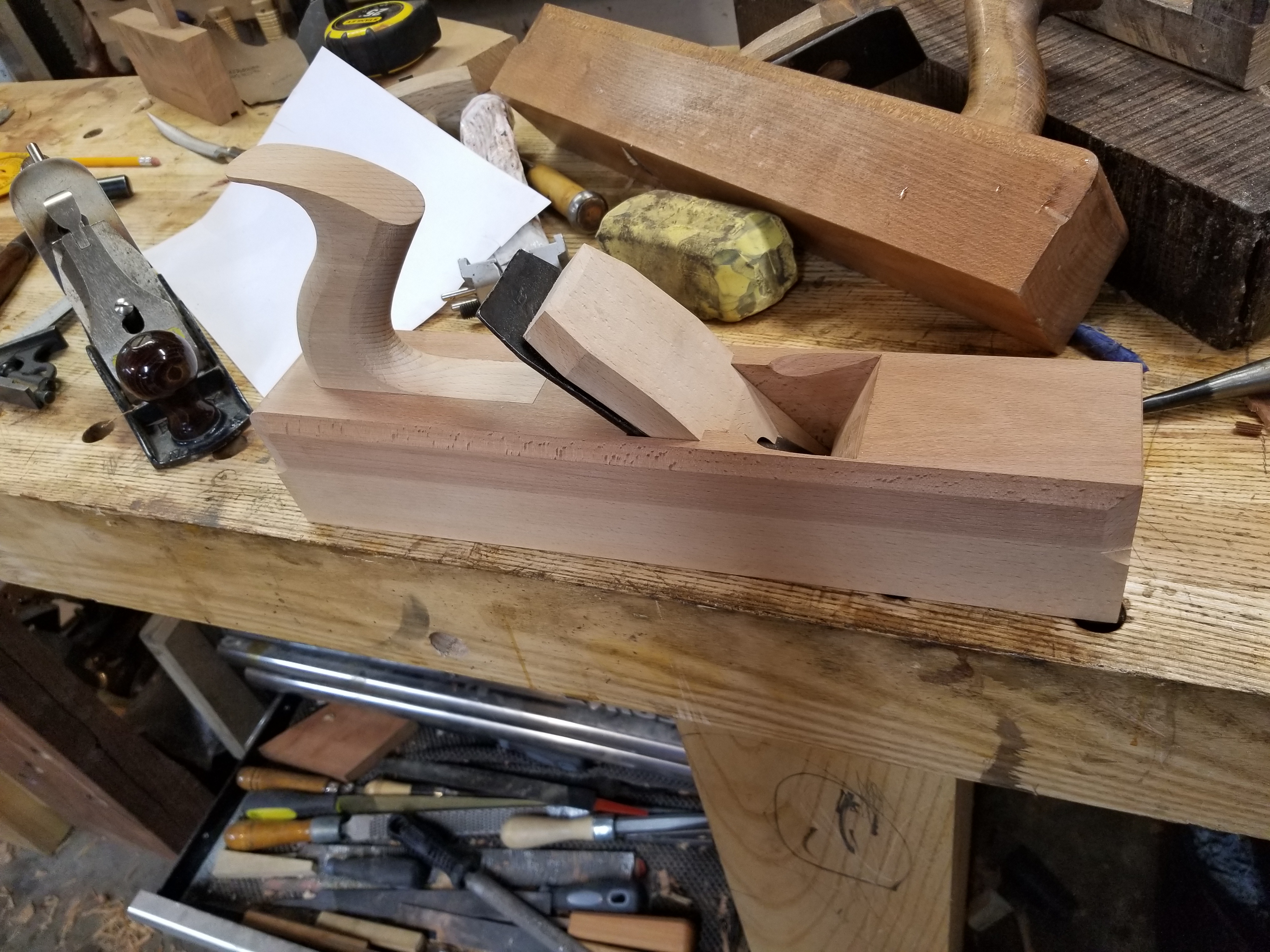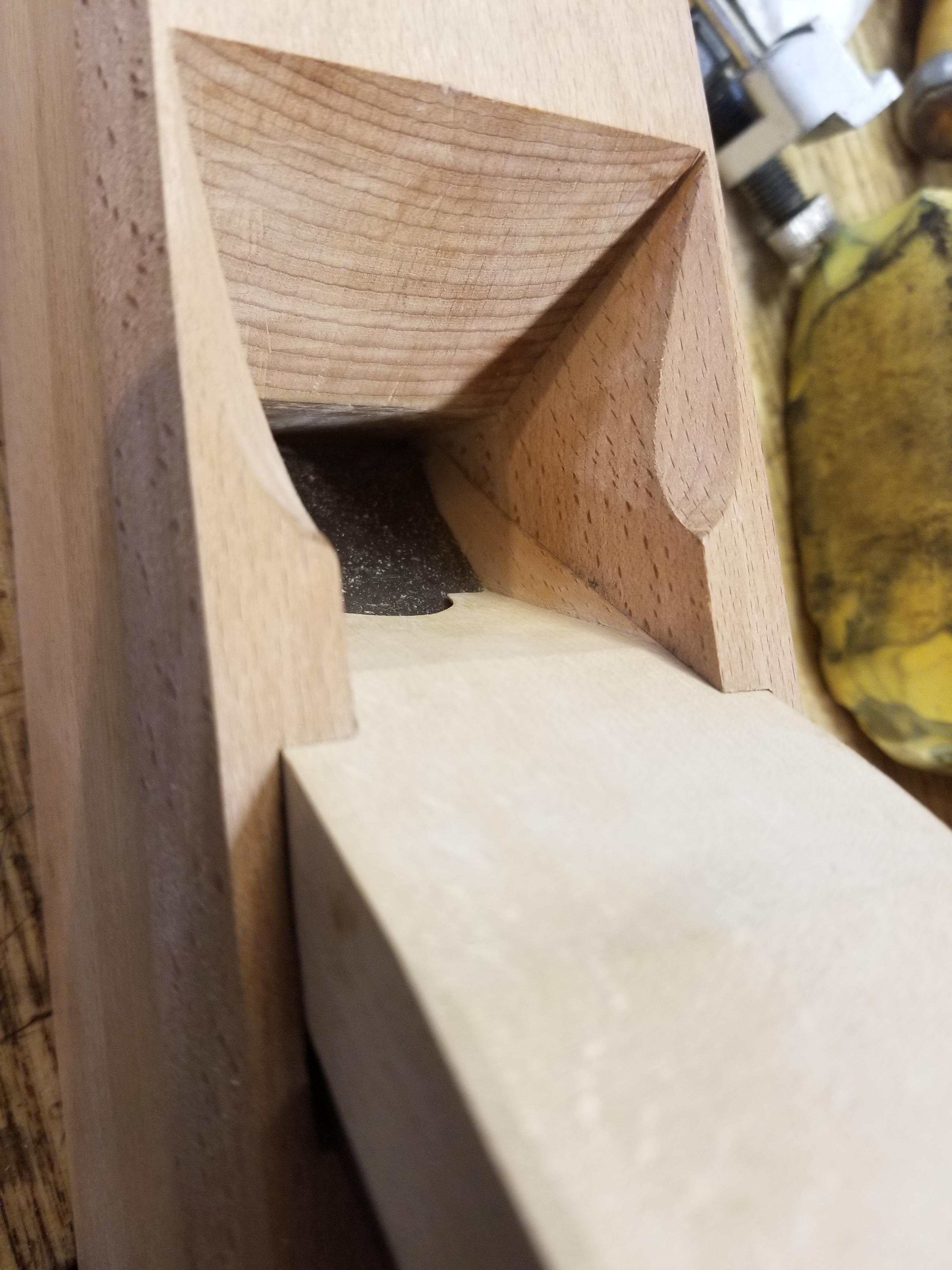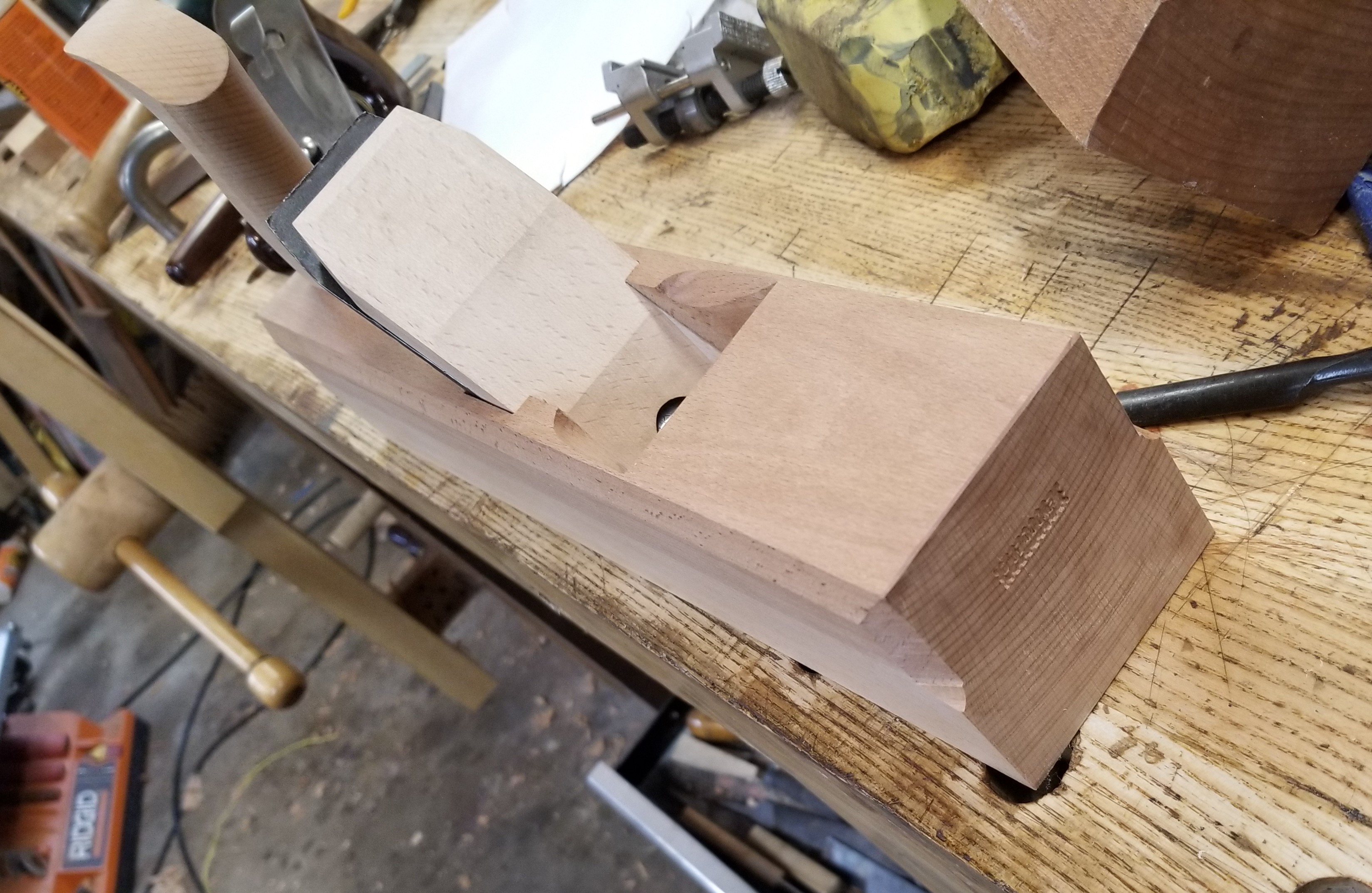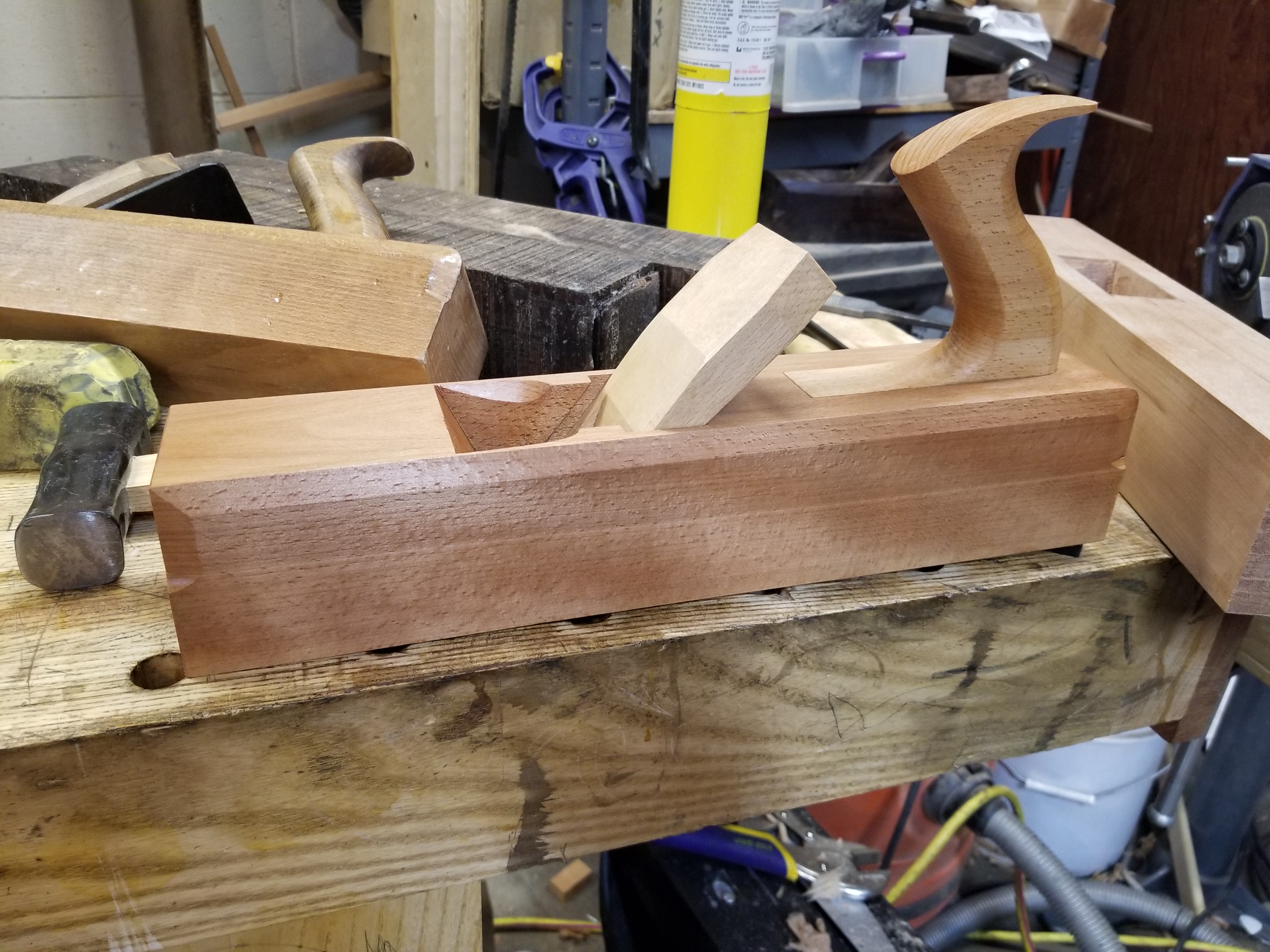I don't make planes for pay, but once in a while, someone will have something that I wouldn't mind having and propose a trade. In this case, they just wanted me to refit some of their planes, which I did, and I told them that I hadn't made a plane in probably a couple of years now and I wouldn't mind making a few to make sure I don't forget how (not inclined to watch my own videos...that's for sure).
This is a 15" jack plane that I'd normally make in 17" length, the latter proportions in general that I found on my favorite mathieson jack plane. 2 1/2" ward iron and matching cap iron.
American beech, of course. I'm running out of american beech, but there are a lot of beech trees growing here that just age out and fall over. At some point, I hope to get access to cut a section out of one of them just as it falls (it spalts right away)...until then, I have some euro beech, but euro beech just looks cheaper and more common.
short small video of the planes first fine shavings (after confirming no clog points and then flattening the bottom in earnest)
https://imgur.com/gallery/sMEM7MF
Last picture is after oil.




This is a 15" jack plane that I'd normally make in 17" length, the latter proportions in general that I found on my favorite mathieson jack plane. 2 1/2" ward iron and matching cap iron.
American beech, of course. I'm running out of american beech, but there are a lot of beech trees growing here that just age out and fall over. At some point, I hope to get access to cut a section out of one of them just as it falls (it spalts right away)...until then, I have some euro beech, but euro beech just looks cheaper and more common.
short small video of the planes first fine shavings (after confirming no clog points and then flattening the bottom in earnest)
https://imgur.com/gallery/sMEM7MF
Last picture is after oil.





































